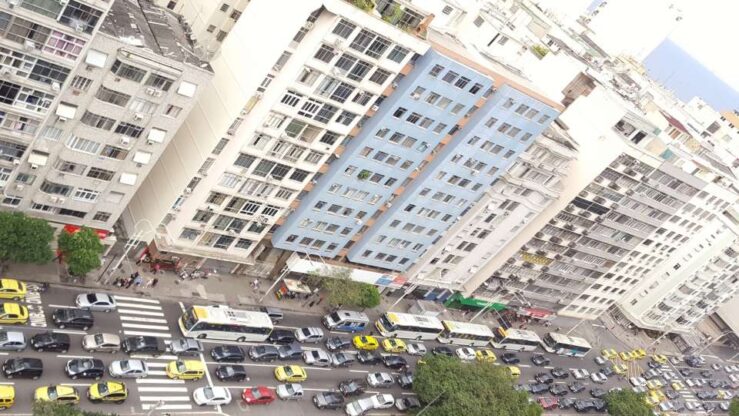Sacred Valley Peru, Maras, Moray and Inca Ruins in Pisac
Part 1 of our 2-day tour to Machu Picchu – Read part 2
1. Cochahuasi Animal Sanctuary
2. Inca ruins in Pisac
3. Pisac
4. Moray agricultural terraces
5. Maras salt pans
6. Ollantaytambo Fortress
He introduces himself as Henry, our tour guide for a two-day overnight trip. He will take us to some of the outstanding Inca ruins in the Sacred Valley in Peru, culminating with a visit to Machu Picchu the second morning. We will travel by van along the Urubamba River and train the last stretch of the railroad to Aguas Calientes, the town at the foot of Machu Picchu.
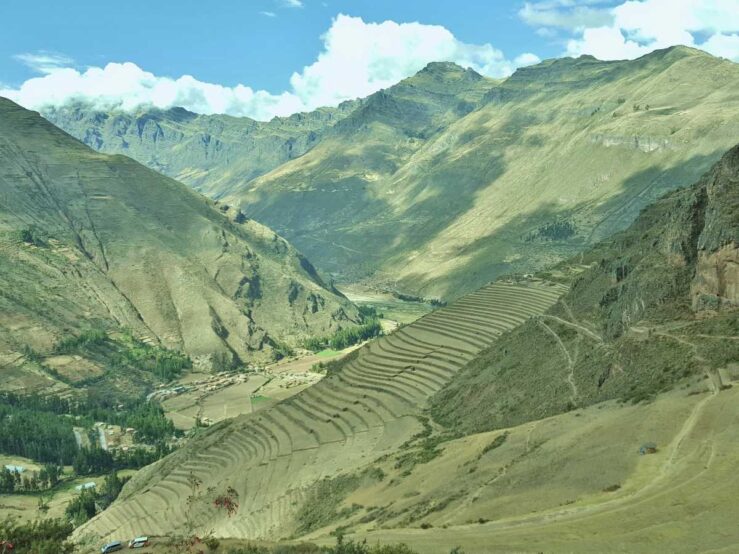
Urubamba Valley | Photo: Travel In Culture
He is Quechua, of indigenous descent, and probably has a much more tongue-twisting name in his native language. He is accompanied by a young driver, who is responsible for us getting there safely by the winding mountain roads.
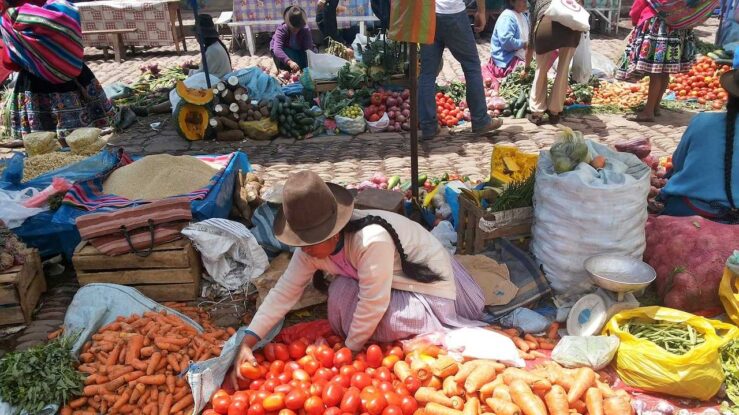
Market at Ollantaytambo | Photo: Ana Arantes
We have, after thorough online research, found and bought the two-day Machu Picchu and Sacred Valley tour through a Peruvian agency. This tour will cover Machu Picchu and the most important Inca ruins in the Sacred Valley, plus several other sights, including the Incan agricultural area Moray and the Maras salt pans. Surprisingly, it turns out to be a private tour for just the five of us, even if we had booked and only paid for a group tour!
‘Sacred Valley Peru, Maras, Moray and Inca Ruins in Pisac’
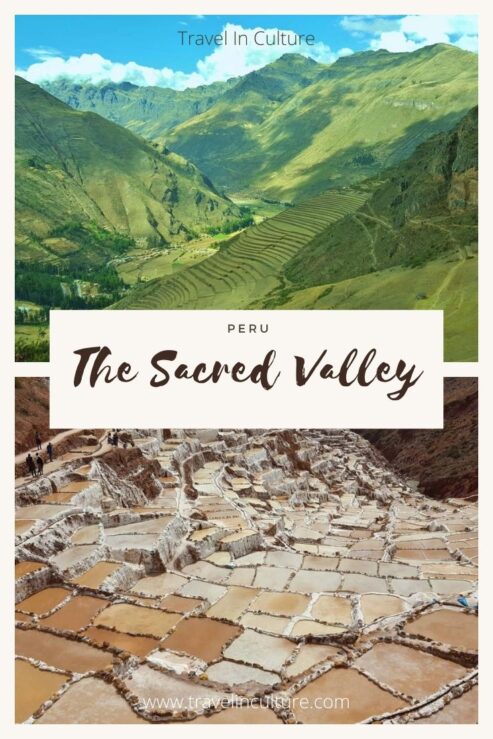
We are picked up by car at our hotel in Cusco at 7 a.m. Soon, we realise that, even if young, the driver is very competent. He takes us proficiently up the narrow hairpin roads that, at first glance, seem impossible due to appalling traffic congestion.
Crime rate Peru/your country
McMeal price Peru/your country
Road safety Peru/your country
Henry is very informative about the native culture of Peru and how the descendants hold on to their roots. He teaches us that Quechua today is widely spoken and now again compulsory to learn in Peruvian schools. During the last few years, priority has been given to the native language at the expense of learning English. Previously, English was taught as the first foreign language, but this is no longer the case.
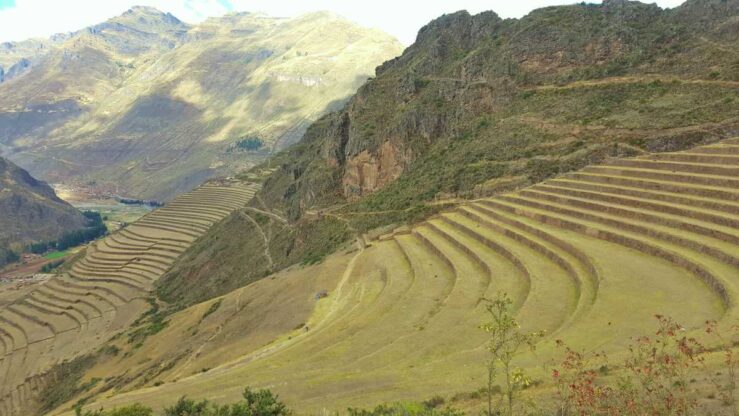
Photo: Travel In Culture
The first stop is at the Cochahuasi Animal Sanctuary. We are not really prepared for what we will see here since our focus has been on the Inca ruins in the valley.
Therefore, with genuine astonishment, we enter behind the fence and discover the world of animals there. The sanctuary in the Sacred Valley reveals many species native to Peru. Three lively bears are playing around behind a fence, which does not look so safe. Anyway, the staff reassure us that these bears do absolutely not pose any danger to humans. They are entirely vegetarians and supposedly very friendly by nature!
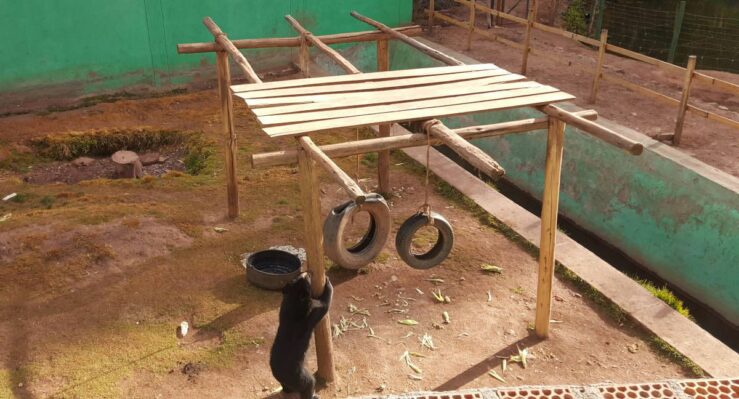
Playing bear in Cochahuasi Animal Sanctuary half an hour’s drive from Cusco | Photo: Travel In Culture
All of a sudden, the youngest bear climbs onto a homemade wooden climbing frame and begins to jump up and down on the very top. It looks as if the heavy creature can fall through at any moment – but of course, it does not happen!
It is a gem of a sanctuary where they rescue, care for and rehabilitate wild animals captured illegally. During the next hour, we marvel at llamas, vicunas, alpacas, colourful birds, a shy puma and, not least, beautiful condors. The staff animate them to fly from side to side in their huge enclosure across the valley. It is the first time we get the chance to watch beautiful condors flying, and this is even in close-up. With their gigantic wingspan, they are soaring majestically in the air, leaving us full of admiration for their elegance and gliding movements.
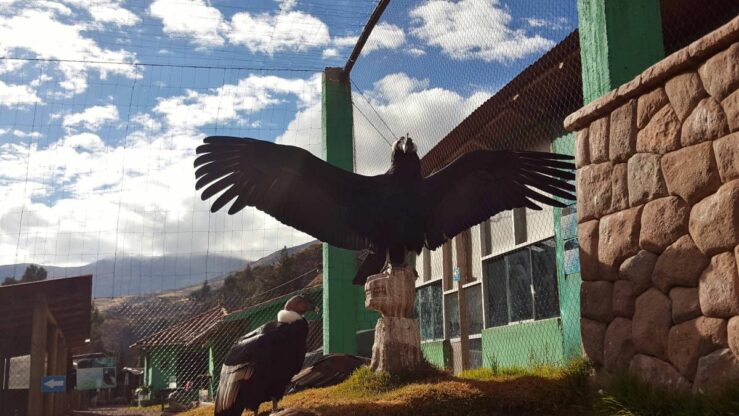
Impressive condor at Cochahuasi Animal Sanctuary in the Sacred Valley | Photo: Travel In Culture
Pisac in Peru is famous for its Inca ruins, and we are definitely not disappointed. It is a lot harder, though, to climb the hillside than I have expected. Even if I no longer have any altitude problems walking around at a normal pace, physical exercise like climbing in the relatively thin air in Peru at the Pisac ruins challenges me. A few well-deserved stops on the way up are required, but encouraged by the captivating Inca history, we finally reach our target!
At first, we cannot spot any traces of the Pisac cemetery. It then suddenly occurs to me that they used to bury people inside the mountain. The Pisac cemetery is simply a lot of holes in the vertical mountainside! Henry then clarifies to us how the holes were used as tombs. The more prominent the person was, the higher and more unreachable the tomb.
The Peruvian Incas built agricultural terraces or andenes up the lush hillsides. Just like the ruins of distinguished Inca houses and complex fortresses in Peru, many of the terraces on the sloping hillsides of the Sacred Valley are also preserved and protected.
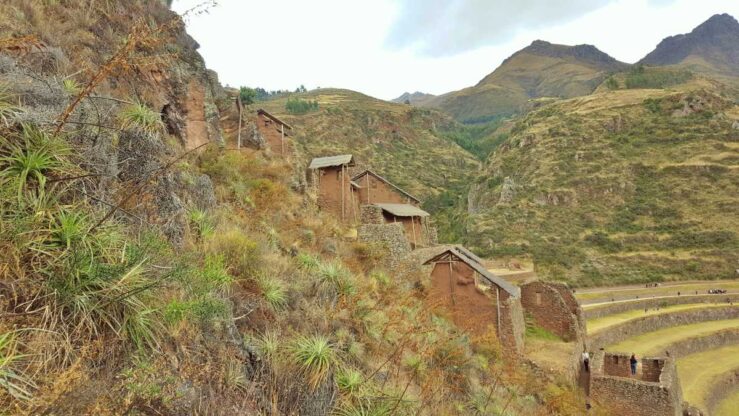
Inca ruins at the archaeological site Pisac Peru | Photo: Travel In Culture
Around the town of Pisac, some of the best-preserved agricultural terraces in Peru still stand. Many are protected today, but our companions take us to some terraces still used today for crops. I cannot deny that I am spellbound by the thought that people have worked in these same terraced fields for hundreds of years. Seen from afar, they appear like an artistic, intricate painting – a breathtaking scenery with snow-capped peaks in the background.
The ancient Inca culture fascinates us, and our guide clarifies many details about the archaeological remains. We listen carefully to his nuggets of information about the Inca ruins because it is fascinating and because he double-checks if we remember what he has already explained! We get loads of information!
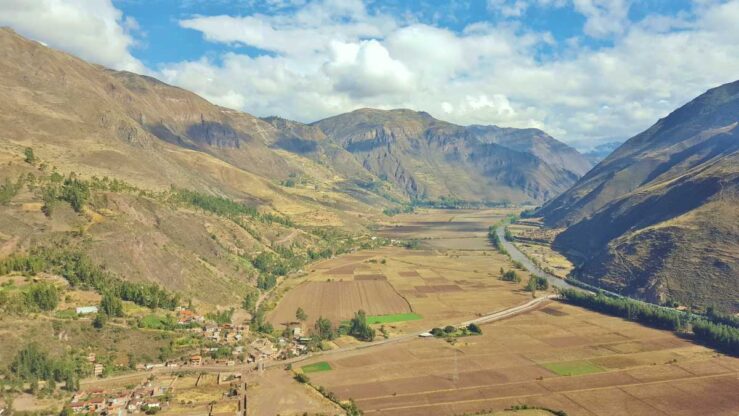
Spectacular view of the Urubamba Valley | Photo: Travel In Culture
In the present-day town of Pisac, a bit further down the mountain, there is twice a week a considerable fair of crafts with clothing, bags, and ceramics. Indigenous merchants from near and far come to sell their products on the local market. Unfortunately, it is not one of those days that we are here, so we will have to be content with the supplies in the Cusco markets one of the following days! Passing through the modern village of Pisac, we notice the traditionally and colourfully dressed women carrying children on their backs.
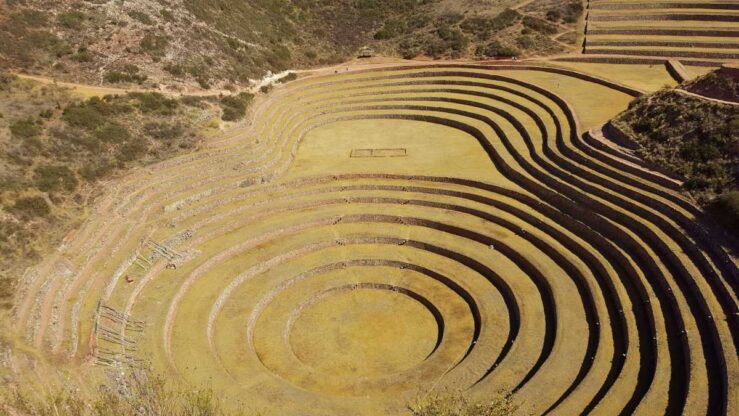
Moray agricultural terraces, Peru | Photo: Travel In Culture
Next, our driver shows his extraordinary driving skills by taking us up the narrow mountain road towards Maras, Moray and the Inca culture in this part of Peru. At some moment, we are honestly convinced that we will never arrive – or be able to continue at all – due to a hopeless line of vehicles blocking the road. Nevertheless, our young driver can do wonders with the car, and ten minutes later, we miraculously get out near the entrance of Moray.
The archaeological site is situated on a high plateau at 3,500 metres (11,500 feet) and consists of terraced circular depressions. Henry explains that the Incas used the terrace rings for agricultural experiments. There is a considerable temperature difference (about 15 degrees Centigrade) between the bottom and the top level of the circular stone depression. The Incas in Peru could then test various kinds of crops on different levels here at Moray (also with soil imported from elsewhere).
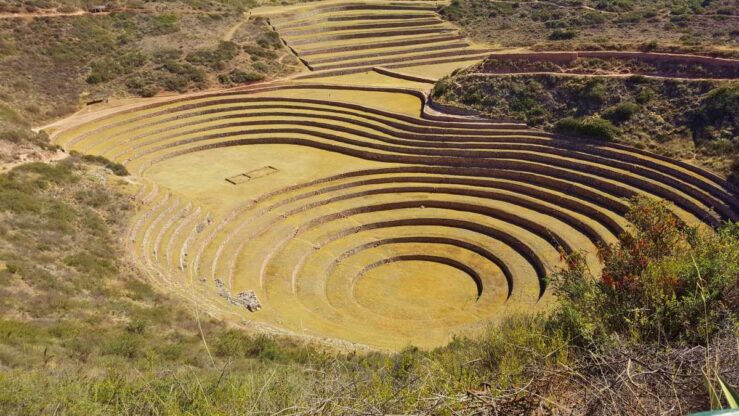
Moray agricultural terraces were used for the Incas’ crop experiments in Peru | Photo: Travel In Culture
Today, it is believed that the existence of more than 2000 Peruvian kinds of potatoes can be attributed to the Inca experiments in such ancient, agricultural laboratories as Moray. We see an old preservation technique in some fields in the valley, where we notice potatoes spread out on the ground. They are drying, and Henry explains that after drying in the Andean sun, they can be preserved for 500 years!
We are walking around one of the best conserved archaeological amphitheatres. Henry points out that the vertical distance between the levels is at least 3 metres (10 feet). That is the minimal distance required to avoid the llamas jumping from one level to another, and the terraces were also used for animal husbandry.
Near the old, circular terraces of Moray Inca ruins, we catch sight of several female shepherds with a flock of sheep or alpacas and their younger children around.
The Incas were clever and built an irrigation system with drains in the terrain, as they did at most construction sites. Our Peruvian guide further describes that even when there is heavy flooding in the area, the water nearly always immediately disappears on the archaeological site of Moray!
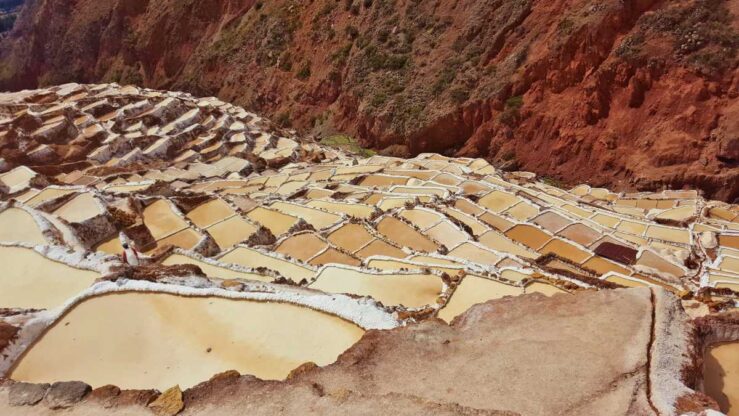
Maras salt pans, Peru | Photo: Travel In Culture
Ten minutes’ drive from the picturesque Moray, we get out at Maras. The salt pans Salineras de Maras are extraordinarily beautiful, with all shades of reddish brown basins. It is a very intriguing sight. Nevertheless, Maras’s shallow saltwater pools are no more than 30 cm (12 in) deep each.
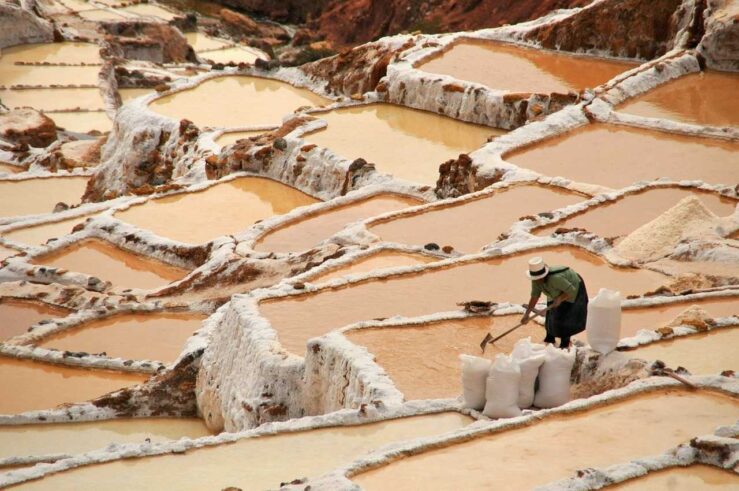
Maras Salinas, Peru | Photo: Pierre Rigou / Pixabay
The brine channelling down comes from a subterranean source, and thanks to a clever irrigation system, the salt water can be let into and further through the pools to fill them all. The water eventually evaporates – and leaves crystallised salt behind. This process and the Maras salt pans have existed since the Inca period.
We balance on the pool edges and can hardly stop taking photos. Flanked by the characteristic surrounding mountainsides and peaks, they are the epitome of Andean beauty.
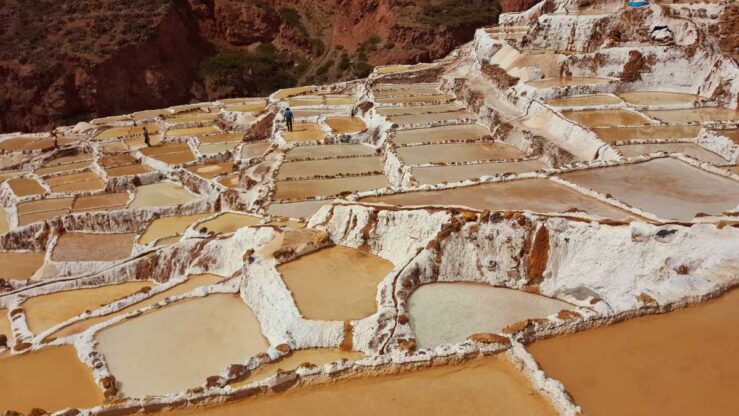
The salt ponds at Maras, Peru, are only 30 cm deep and are filled with brine channelling down from a subterranean source | Photo: Travel In Culture
Time flies – it is 2 p.m. and lunchtime. The driver takes us to an ‘Inca restaurant’ with a plentiful and appetising buffet of Peruvian, tasty dishes. To follow up on our new knowledge of the abundant sorts of Peruvian potatoes, we must try a few. They are exquisite and very different from each other in texture and flavour! Also, alpaca and Peruvian ceviche are among our favourites here.
It is a nice restaurant where people stay for a while, enjoying the varied buffet. Apparently, a good meal here implies a liquor with the dessert. The waiter doesn’t even ask if we want it, but brings glasses for everyone – our driver included! We glance nervously at each other. It is hopefully unthinkable that our challenged mountain driver will accept it, and to our relief, he declines since he does not like alcohol at all!
We end our Sacred Valley tour by visiting the location of the Inca military and religious complex in Ollantaytambo. The town is also the only Inca town that remains relatively intact and is still partly inhabited by descendants. One of the most recent theories is that the Incas succeeded in hiding Machu Picchu from the Spaniards by decorating the fortress so sumptuously that the Spaniards would believe that they had really found Machu Picchu!
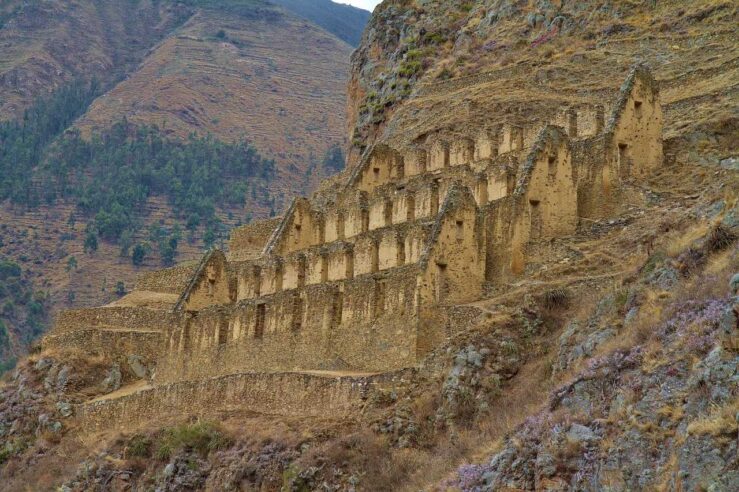
Ollantaytambo | Photo: Jeremy Nelms / Pixabay
After a fantastic day in the Sacred Valley visiting the most incredible Inca ruins in Peru, in particular, Maras, Moray and Pisac, our driver takes us to Ollantaytambo Station, from where we will be catching the train further to Machu Picchu.
Read next: Galapagos Animals and Darwin’s Birds Hang Out at Tortuga Bay
Find useful travel gear: Travel Essentials
‘Sacred Valley, Maras, Moray Peru and Inca Ruins in Pisac’
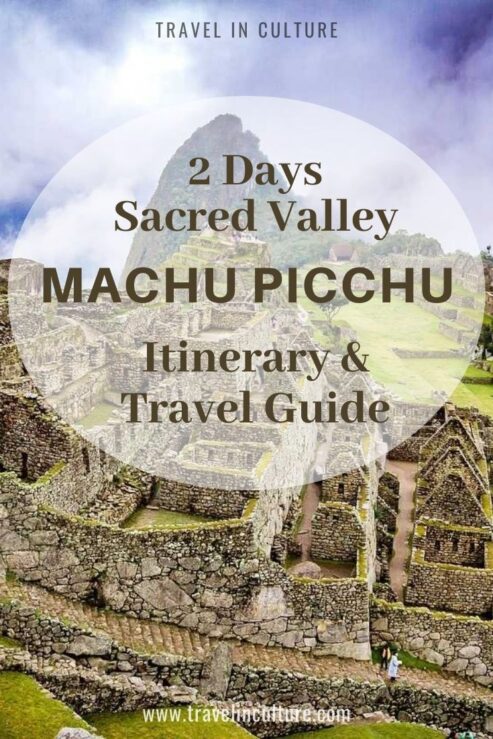
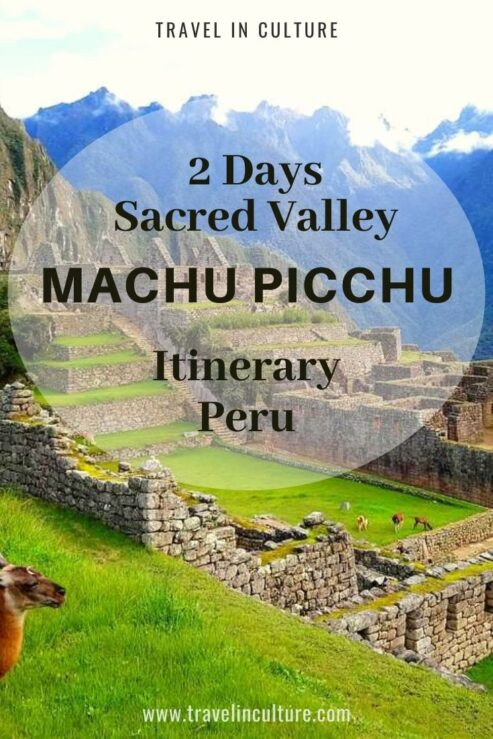
Featured image of
Sacred Valley, Moray, Maras Peru and Inca Ruins in Pisac:
JD Benthien / Pixabay





